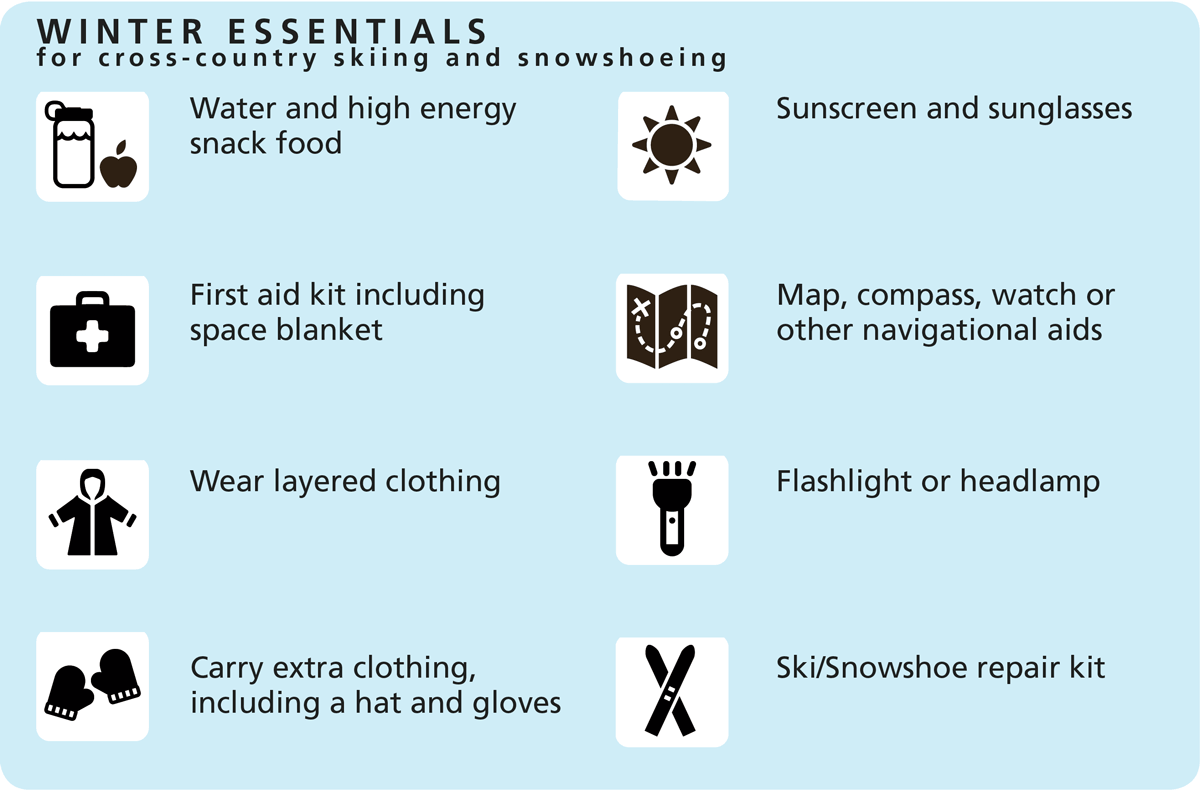
No gliding on snow shoes. You may have heard the same thing about cross-country skiing but.

Which is more fun.
Snowshoeing vs cross country skiing. The Advantages of Snowshoeing vs Cross Country Skiing. Snowshoes have many advantages over cross country skis. Here are 7 reasons to go snowshoeing instead of cross country skiing.
Snowshoeing is easier to learn. Snowshoes are less expensive. Snowshoeing can be done where cross country skiing cant.
Snowshoeing burns more calories. Between snowshoeing and cross-country skiing snowshoeing is generally much easier for beginners to pick up and learn more quickly. Snowshoeing mostly uses the already strong stabilizing muscles in your legs.
The glutes quads and hamstrings. Skiers will want to find a cross-country boot that fits their ski binding so its best to purchase skis and boots simultaneously. Cross-country ski boots are thinner and lighter than snow boots a plus for comfort.
Exercise Benefits of Snowshoeing. If you can walk or hike you can snowshoe. It really is that easy.
Ski-shoeing comes midway between cross-country skiing and snowshoeing in terms of speed. It is much faster as compared to snowshoeing as you do not have to lift or pick up your feet from the pile of snow each time you walk but you can rather push or slide the snow. Skiers will want to find a cross-country boot that fits their ski binding so its best to purchase skis and boots simultaneously.
Cross-country ski boots are thinner and lighter than snow boots a plus for comfort. Exercise Benefits of Snowshoeing. If you can walk or hike you can snowshoe.
It really is that easy. Going 35 miles per hour on Nordic skis aka cross country skiing burns 600 calories an hour while snowshoes at the same pace burns 740 calories an hour. Which leads to a sobering thought.
The cross country skier probably is more rested after an hour than the snow shoe person who has to lift their legs over and over. No gliding on snow shoes. Exercise Calories Burned Data from Harvard Health Publications reveals cross-country skiing and snowshoeing burn calories at the same rate.
A 125-pound person who spends 30 minutes cross-country. Suggestions for Cross-Country Skiing and Snowshoeing. Parc National dOka Oka.
Every day from 800 am. 28 km of trails for hiking on snow 20 km of snowshoe trails and 259 km of cross-country skiing trails. Cross-country skiing is sometimes referred to as Nordic skiing and as opposed to snowshoeing cross-country skiing is quite strenuous and takes time to be really good at it.
However compared with downhill skiing the fact still remains that it is a lot easier to do than downhill skiing and that is not at the expense of the thrills that come with it. Cross-country skiing down a hillwhatever the technique and possible number of fallsis a lot more thrilling than walking or running down on snowshoes and it makes a lot of switchbacks. Cross-country skiing is slightly more technical than snowshoeing but still possible to learn in only a few outings.
Instead of pointing skis downward and turning as downhill skiers do cross-country skiing is all about the glide motion. Patti says snowshoeing has these advantages. If you can walk you can snowshoe.
You may have heard the same thing about cross-country skiing but. If you do too then youve probably used cross-country skis or snow shoes. Which is more fun.
According to Harvard Medical School youll burn the same number of calories during cross-country skiing and snowshoeing. A 125-pound person will burn 240 calories while doing either activity for 30 minutes while someone who weighs 155 pounds will burn 298 calories during 30 minutes of either activity. Though similar in action and season Nordic skiing and snowshoeing are dramatically different activities.
However there seems to be a divide among winter sports lovers. As with Nordic and alpine skiing a rift is beginning to appear between cross-country skiers and snowshoeing enthusiasts. Located just 40 minutes from Cedar City sits 1300 acres of winter landscape crisscrossed with 23 miles of groomed cross country and snowshoe trails.
This recreation area was brought to life by a collaboration between the Dixie National Forest and the Cedar Mountain Nordic Ski Club.